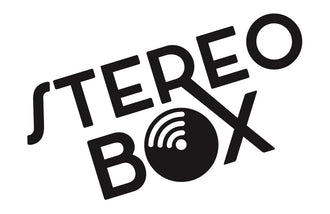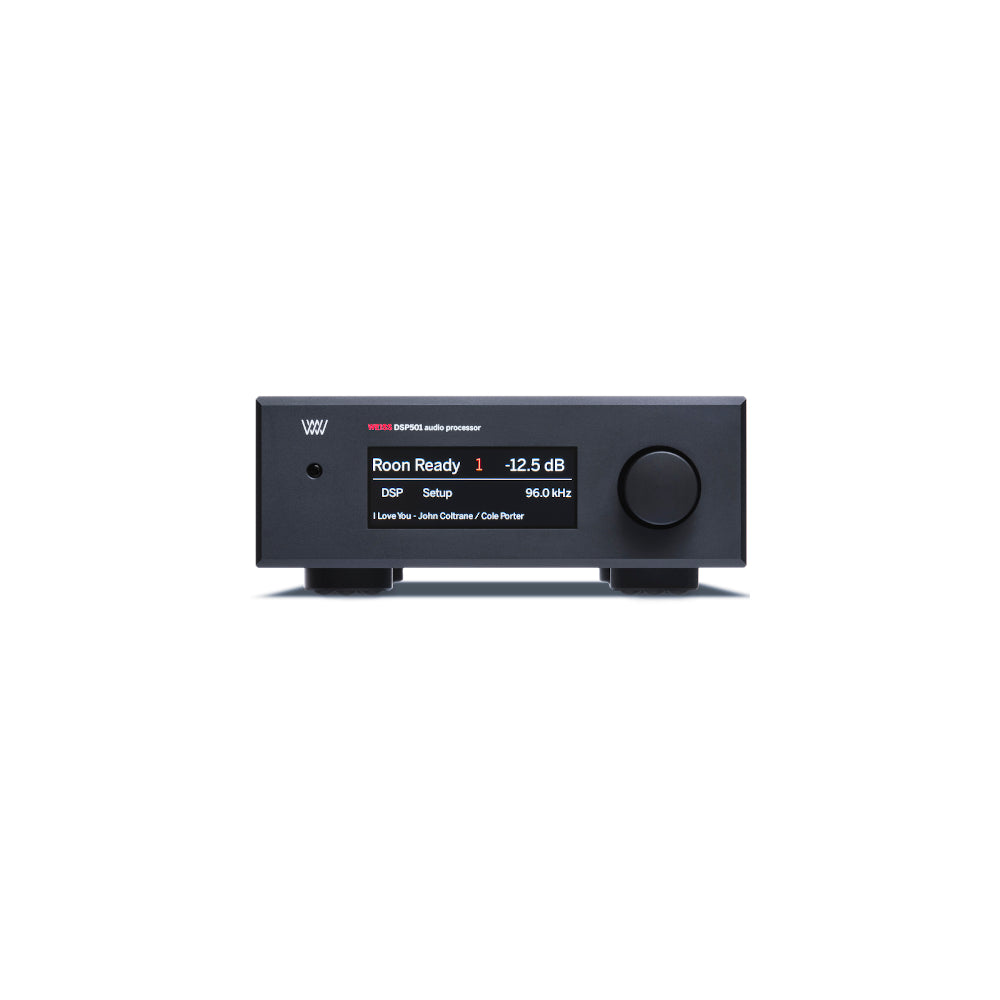
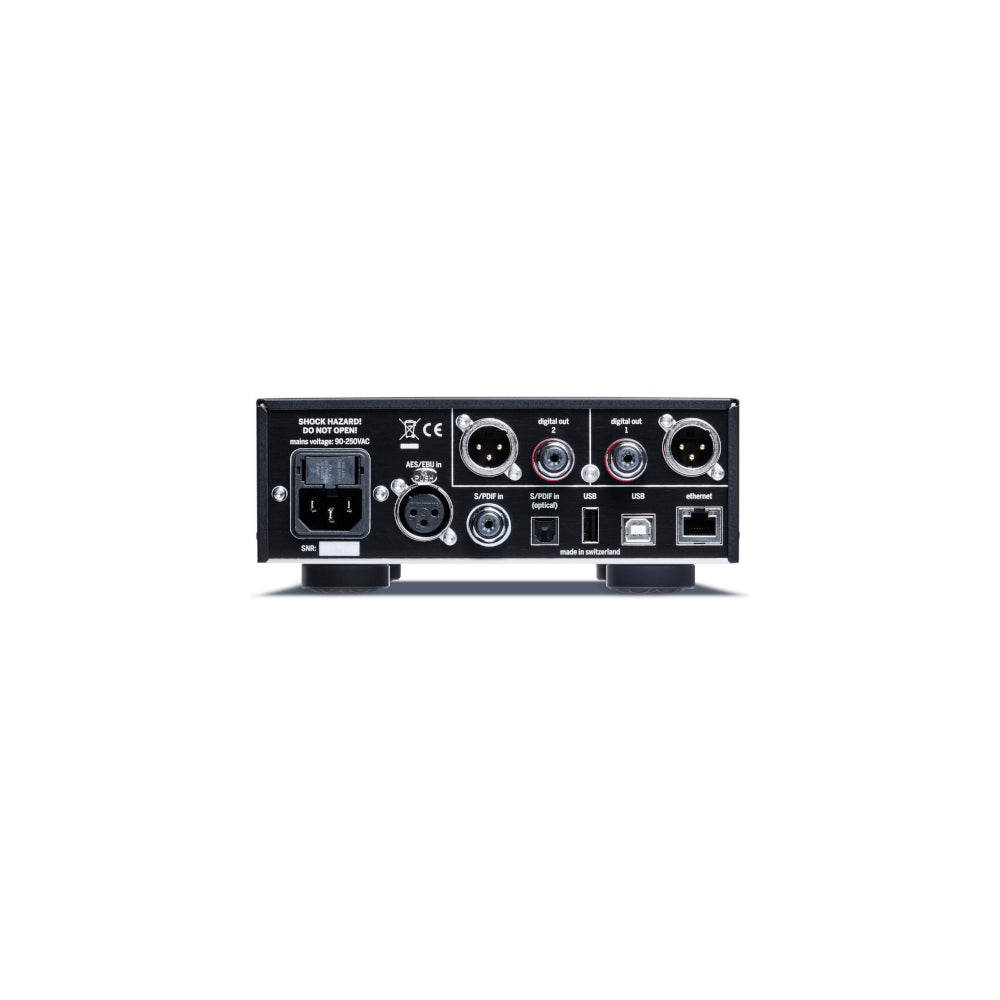
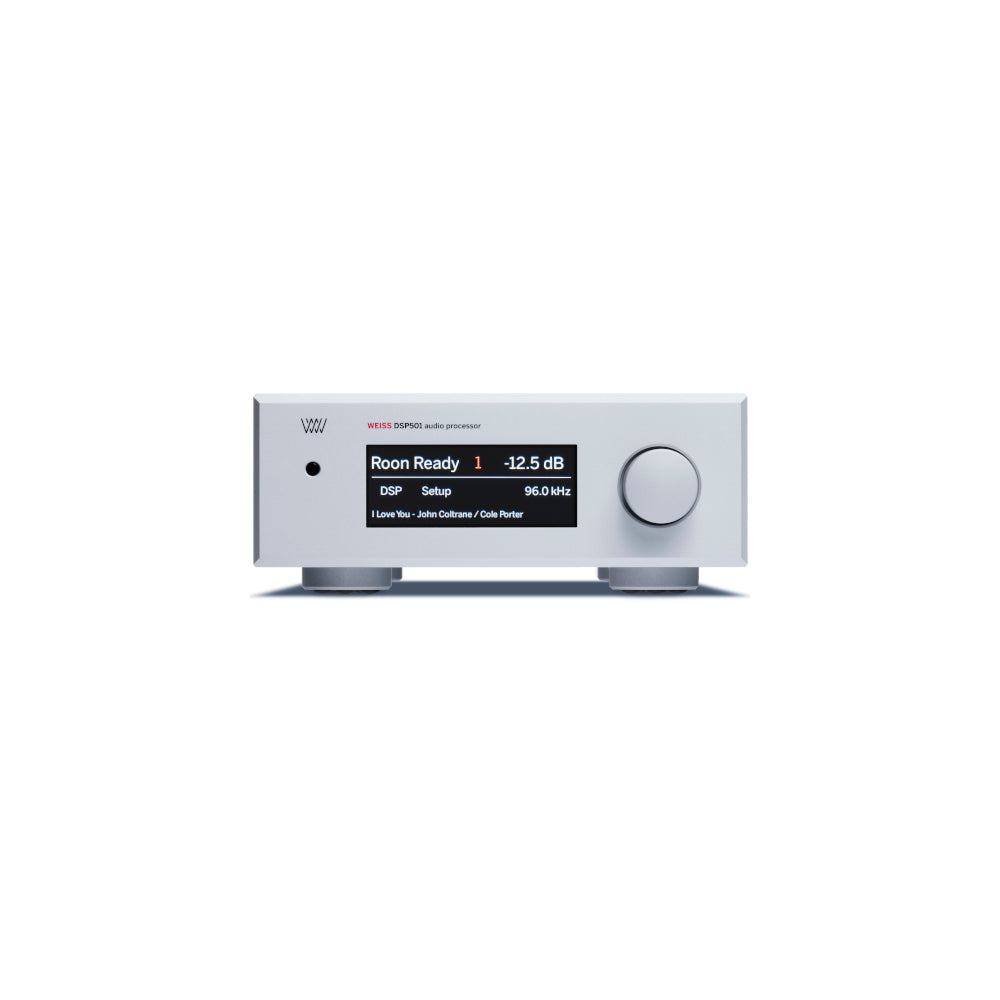
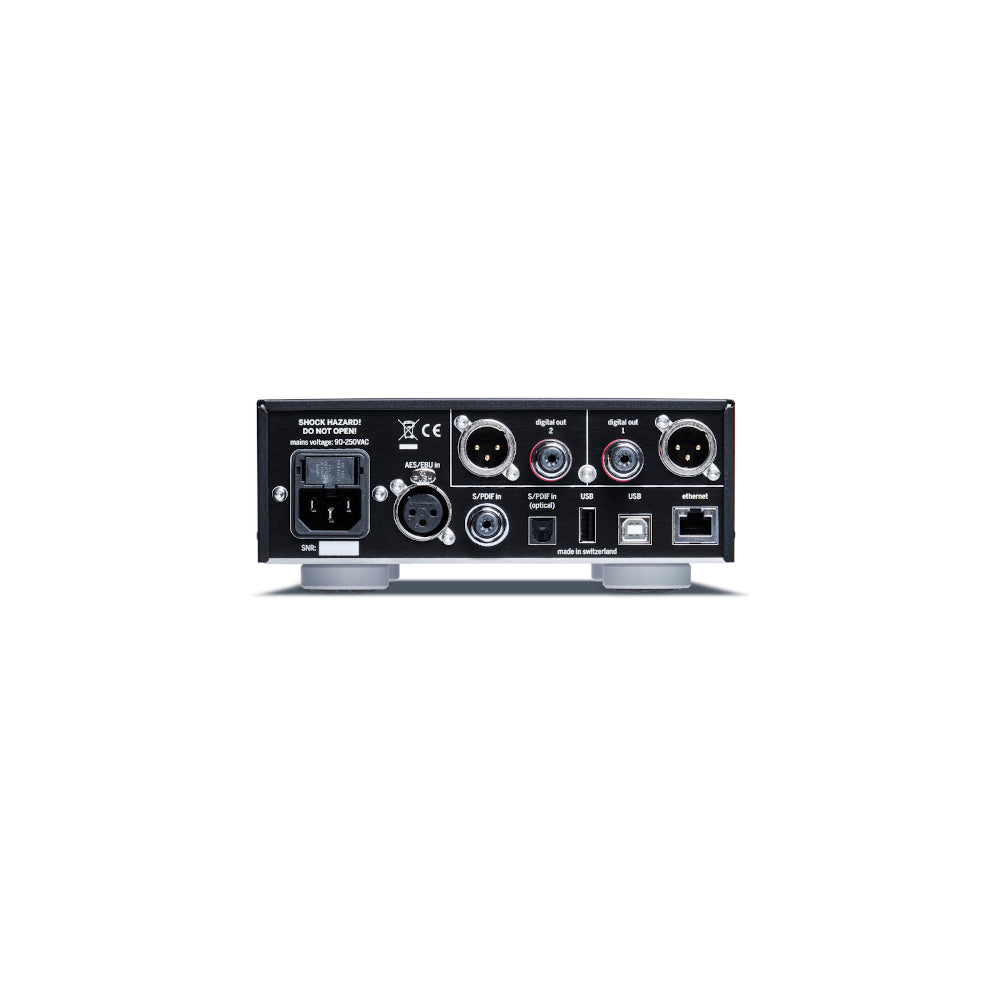
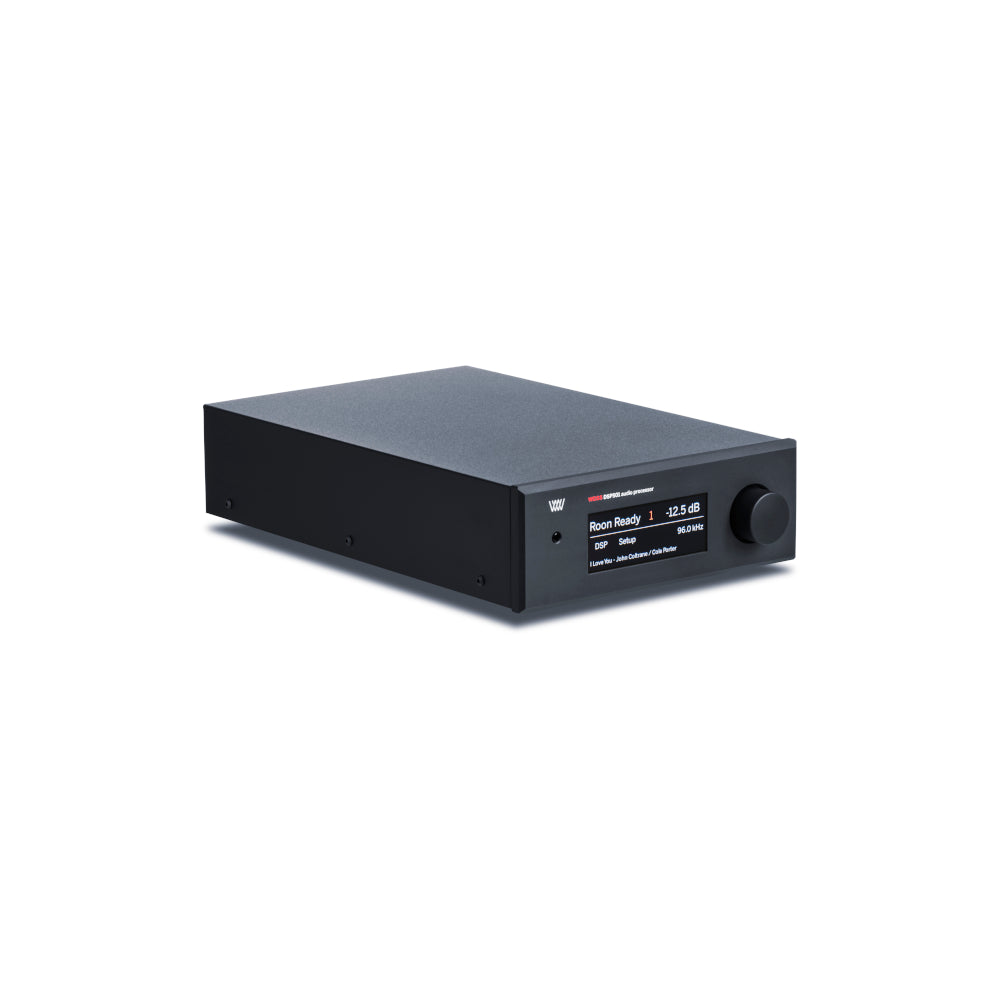
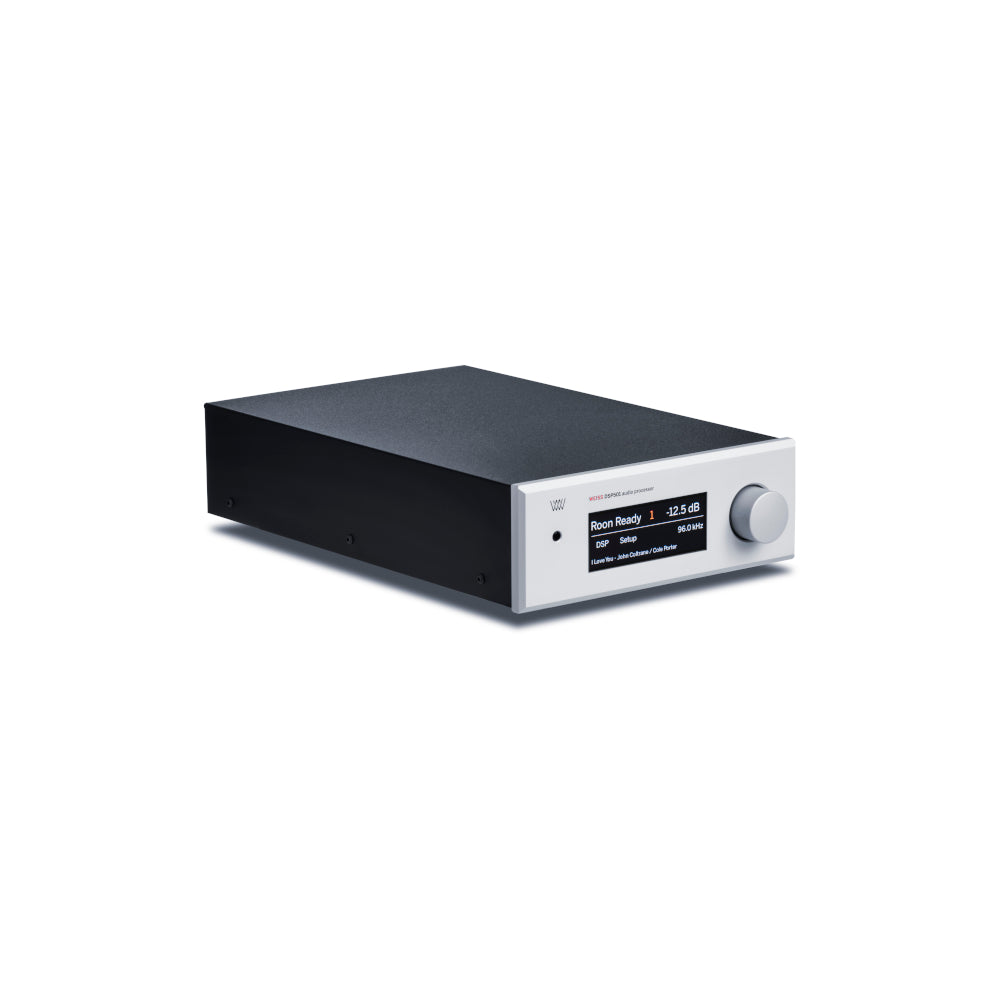
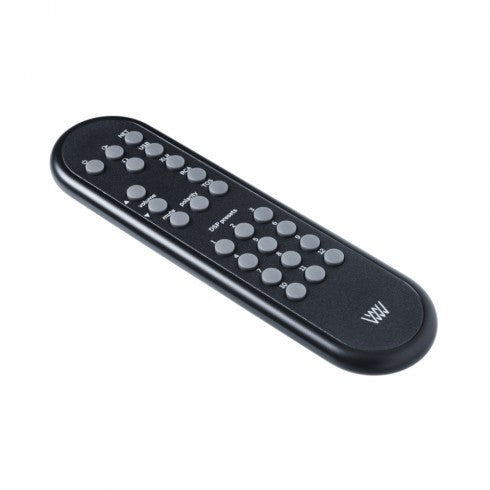
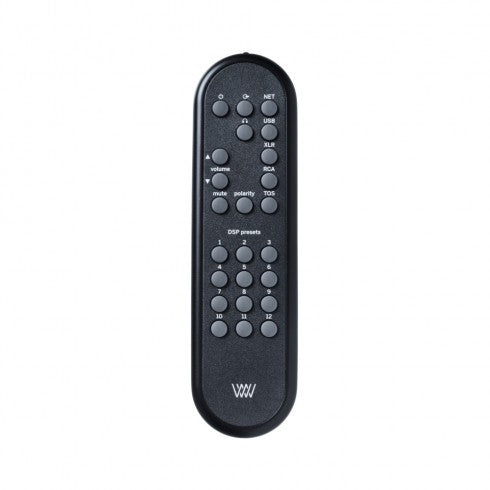
Weiss
WEISS DSP501 Digital Signal Processor And Network Renderer
DSP501
The DSP501 / DSP502 are the new state-of-the-art digital signal processors with an unprecedented level of sophistication and versatility.
With the DSP50x we are creating a new high-end audio unit that has not been available on the market before. It is a digital signal processor with various algorithms that are intended to improve the audio signal or adapt the audio signal to the acoustics of the room or the speakers at hand.
Weiss Engineering has a 30-year history of designing signal processing algorithms for the professional audio market, especially for Mastering Studios. In that time we have learned a thing or two about algorithm design. The DSP50x is the essence of our experiences.
Main features
Mechanics
The DSP50x uses a stainless steel chassis with a solid 10mm aluminum faceplate.
Diet
A powerful non-switching power supply is used. All sensitive voltages have their own regulators which are separated between the left and right channels. The result is an analog output free of "digital noise" and channel crosstalk. The power switch activates a semiconductor relay which is only switched on or off at zero crossings of the mains voltage. This ensures trouble-free power switching. The two mains transformers are toroidal type. The selection of the mains voltage is done automatically by measuring the mains voltage before power is applied to the rest of the electronics.
Synchronization
An internal high precision/low jitter clock generator is responsible for clocking the digital output section. The sampling rate of this generator can be selected by the user between the values 88.2kHz, 96kHz, 176.4kHz, 192kHz. The input signals are converted to the selected sampling rate.
Digital inputs
There are a total of five entrances:
AES/EBU or S/PDIF via XLR, Toslink and RCA sockets
UPnP / DLNA via Ethernet
USB
Accepted formats: PCM 44.1kHz up to 384kHz, DSD 64x / 128x.
Future formats can be adapted to software updates.
Roon Compatibility
Yes, Roon Ready & Roon Tested.
Signal Processing
The DSP50x features a digital signal processing (DSP) chip.
The following DSP algorithms are currently implemented or will be implemented soon:
- Room Equalizer - to suppress Room modes for proper bass reproduction.
- Creative Equalizer - A tone control with low, mid and high frequency boost/cut. Very useful for correcting recordings that don't sound right.
- De-Essing - the automatic removal of excessively bright sibilance from human voices. The sibilance effect can be more or less pronounced depending on the speakers or room acoustics.
- Constant Volume - Adjusts the audio volume (loudness) to a constant value on all tracks being played. Useful for "party mode" when the volume control should remain unchanged.
- Vinyl emulation - to achieve the special sound character of a turntable-based playback chain. There is also an emulation of the DMM-CD procedure offered by the Stockfisch label.
- Crosstalk Cancelling (XTC) - for playback of head-based recordings or live recordings via loudspeakers for an incredible live listening experience. Binaural head-based recordings are usually listened to with headphones because they only work properly if the left channel goes to the left ear only and the right channel only to the right ear. With loudspeakers this is difficult to achieve as the left channel goes to the left ear but also to the right ear, and the same thing happens with the right channel, which goes to both ears. But with some clever signal processing of the loudspeaker channels it is possible to suppress crosstalk, i.e. audio going from the left speaker to the right ear and vice versa. If this works properly, the recording sounds as if you were standing in the space where the recording took place. All the reverberation and 3D representation of the sound sources is present (only for loudspeaker-based playback).
- Loudness Control - an equalization of the audio depending on the listening volume.
- Headphone Equalizer - to adapt any headphone to the listener's ear in terms of frequency response.
Digital outputs
Two S/PDIF outputs on RCA connectors, two AES/EBU outputs on XLR connectors.
Up to 4 audio channels (2 stereo channels) are supported. This allows, for example, to have two different D/A converters connected, one for the speakers and one for the headphones.
Independent DSP processing can be selected for the two outputs.
Output levels can be set roughly to match the output to the D/A Converter / Amplifier chain. Additionally, output levels can be set in small steps for normal level control.
Front Panel Controls
- Rotary encoder knob for changing parameters and turning the unit on and off.
- A touch screen color LCD display.
- An IR receiver.
Rear panel elements
- Digital outputs on XLR and RCA connectors.
- Digital inputs on XLR, RCA, TOSLINK, USB, Ethernet connectors.
- USB Type-A connector for various applications.
- Network connector with fuses.
Infrared remote control
It allows you to control various functions of the DSP50x, in particular:
- The input selected for processing.
- The output type, the level, the muting, the absolute polarity.
- On/Off.
- DSP presets.
Web Interface
The DSP50x features a web interface for configuration via a web browser. The following functions are accessible via the web interface:
- Volume and balance controls.
- Input selection.
- Output type.
- Configuring DSP algorithms.
- Configuring DSP snapshots.
Technical specifications
Power
- Mains voltage: 100....120 V or 200...240 V
- Fuse data: 500 mA slow blow at 100....120 V, 250 mA slow blow at 200...240 V
- Power consumption: 15 VA max.
- Standby consumption: 0.5 VA max.
DSP501 Size
- Depth: 30 cm
- Width: 18.8 cm
- Height: 6.6 cm
- Height with feet: 7.2 cm
Remote Control Size
- Depth: 2.1 cm
- Width: 4.5 cm
- Height: 16.6 cm
Available color
- Silver, Black
Digital inputs
- (1) XLR connector
- (1) RCA connector
- (1) TOSLINK (optical) connector
- (1) USB Type B connector
- (1) RJ45 Ethernet connector
- All inputs accept AES/EBU or S/PDIF signals.
Digital outputs
- (2) RCA connectors
- (2) XLR connectors
- A pair of RCA and XLR connectors carry one stereo audio channel. Two stereo channels can be output.
Analog outputs
- None
Headphone output
- None
Synchronization
- Via the input signal
- Via the internal oscillator
Supported input sampling rates
- 44.1 kHz, 48 kHz, 88.2 kHz, 96 kHz, 96 kHz, 176.4 kHz, 192 kHz, 352.8 kHz, 384 kHz, DSD64, DSD128 (Not all frequencies are supported with all inputs).
Selectable sampling rates for outputs
- 88.2kHz, 96kHz, 176.4kHz, 192kHz
Choose options
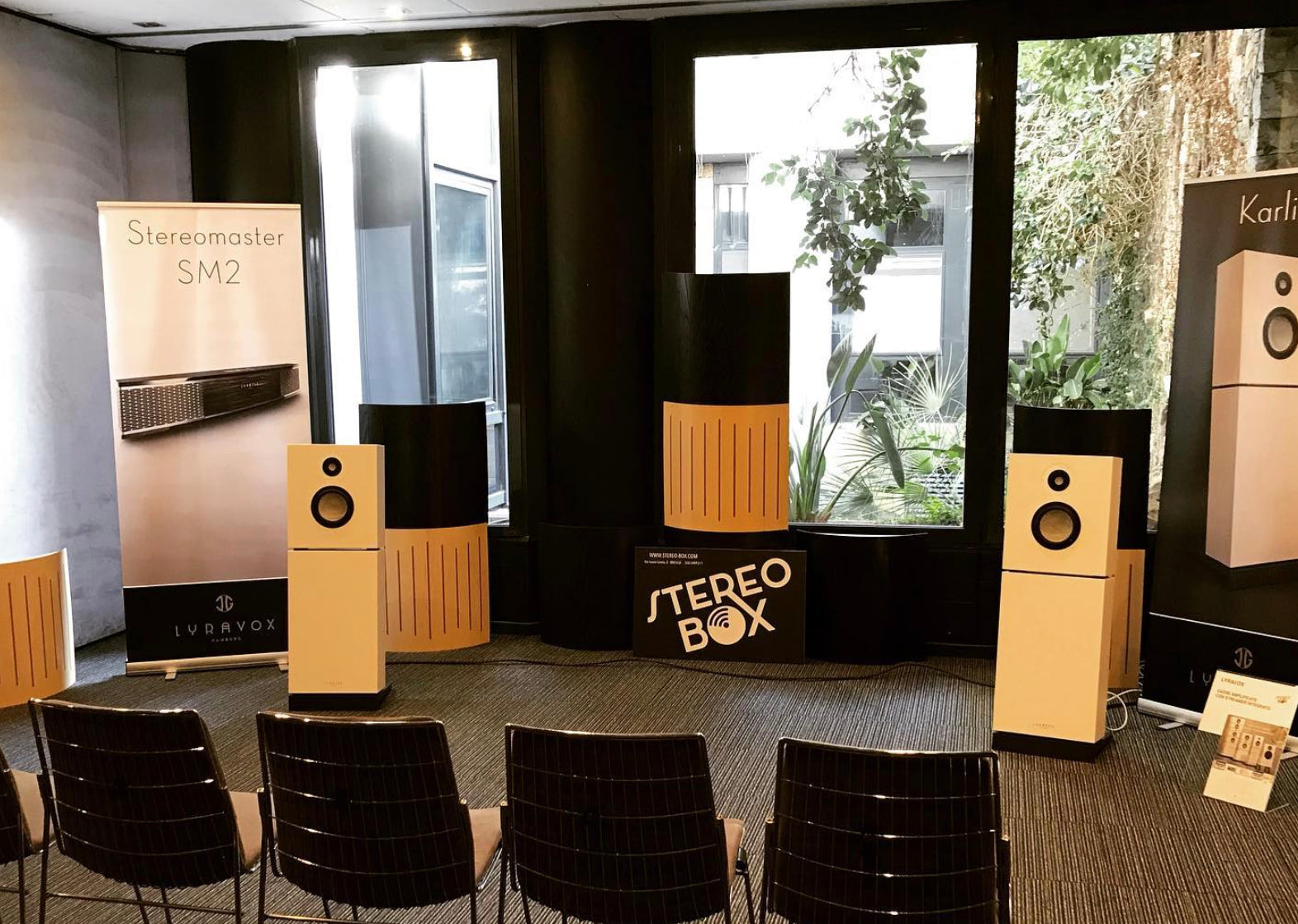
L'amore per la buona musica
Chi siamo
Abbiamo scelto questa attività per passione, e con passione la portiamo avanti. La nostra esperienza, nella riproduzione musicale, nonché in quella della musica dal vivo, ci guida costantemente nelle scelte che facciamo per quanto riguarda i prodotti che andiamo a selezionare per voi.
